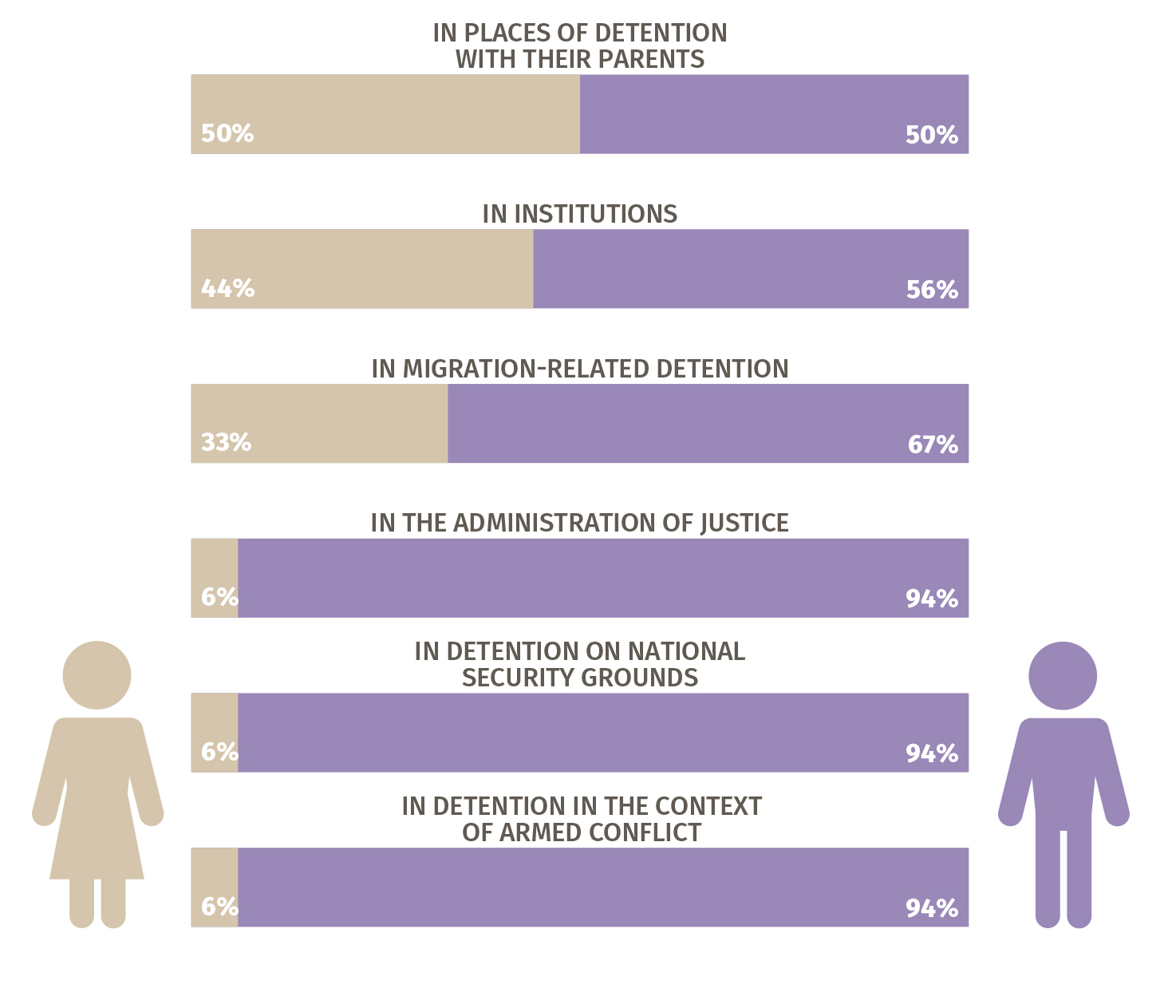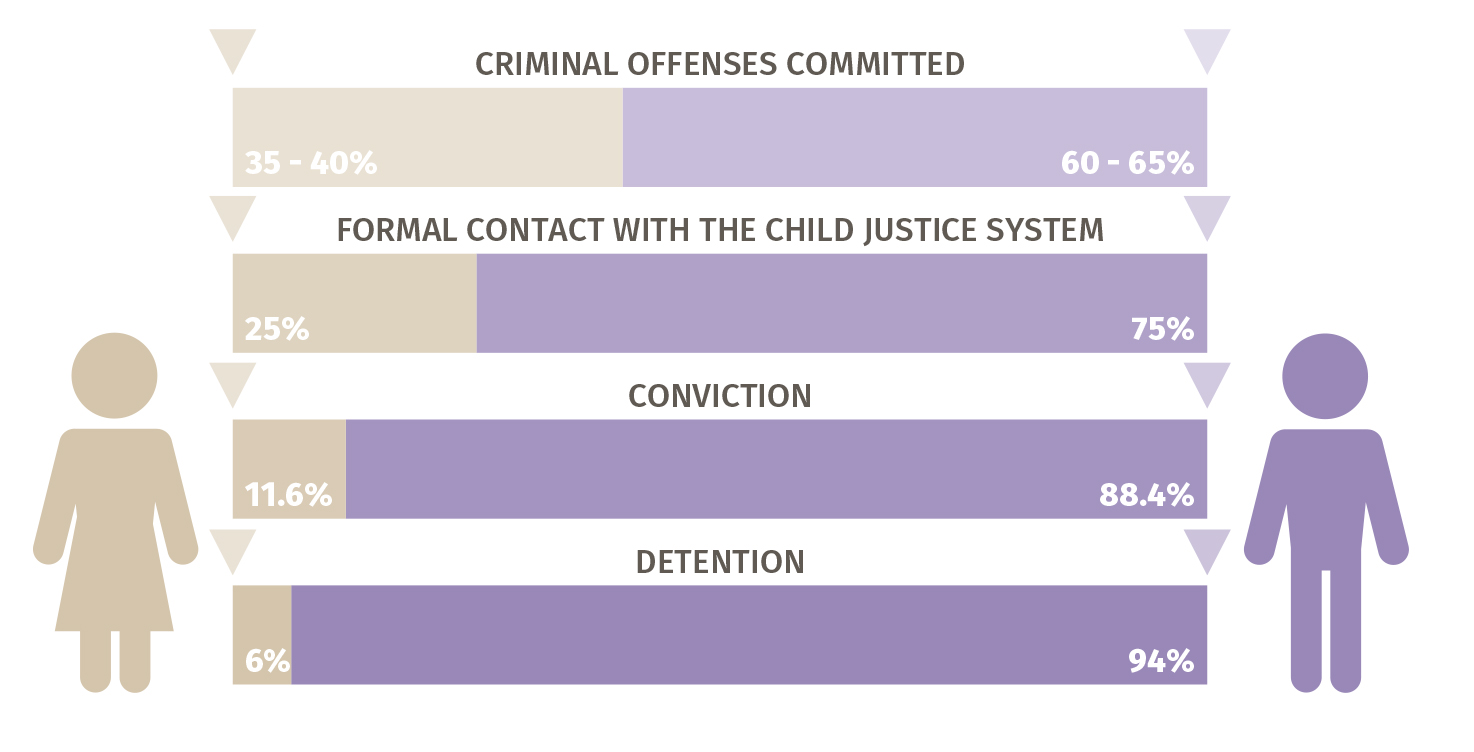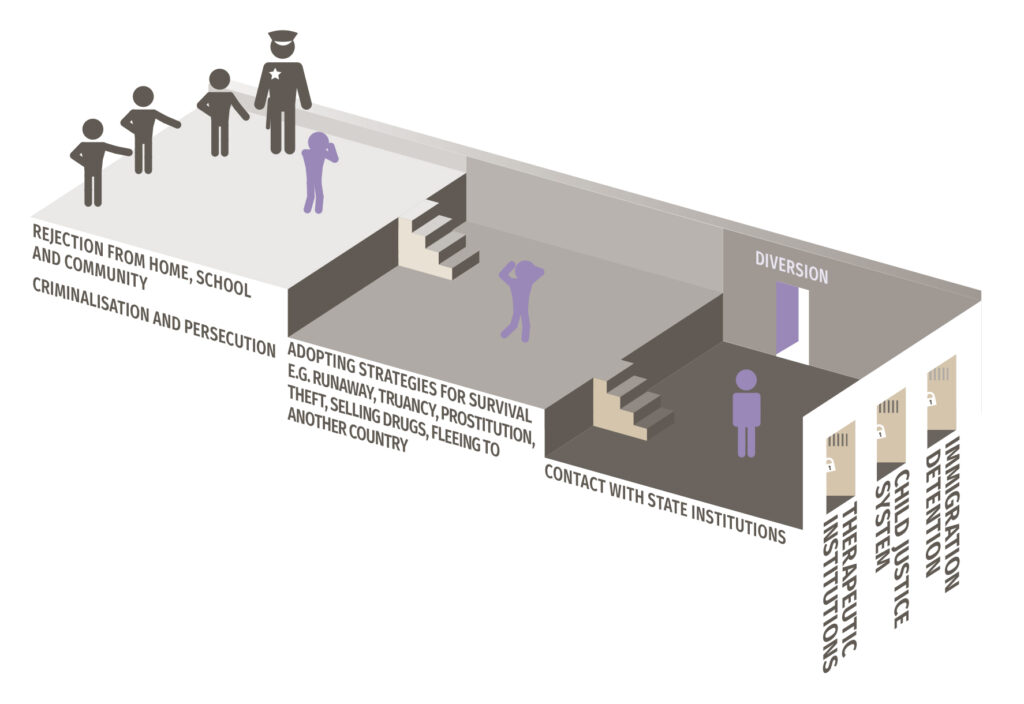Gender



The penal system is arguably the most gendered space in society. Altogether, there are far more boys deprived of liberty than girls. In the administration of justice and the contexts of armed conflicts and national security, 94% of all detained children are boys.
In migration detention, about two thirds of detained children are boys. This huge gender gap in the detention rate is usually overlooked, leading to boys facing harsher treatments and sentences.
The reasons why the overwhelming majority of children deprived of liberty are boys is more difficult to explain, since there is comparably little research available. Most research on the gender dimension of deprivation of liberty relates to the administration of criminal justice and primarily addresses cases of discrimination against girls, not against boys. Yet in 2006, Paulo Sérgio Pinheiro noted that ‘millions of children, particularly boys, spend substantial periods of their lives under the control and supervision of care authorities or justice’s system, in institutions such as […] juvenile detention facilities and reform schools’.
Discrimination against Boys
Discrimination against Girls
In a justice system designed for men, girls often suffer gender-based discrimination in detention, whilst in the context of institutions, violations of their rights often go unreported.
Girls are more likely to be arrested for:
- status offences (runaway, truancy, disorderly conduct)
- being trafficked as a migrant girl
- abortion
- behavioral problems brought on by abuse at home
- violations of public safety laws
- not carrying proper identification
- unlawful gatherings for purposes of intelligence
- sexual exploitation during armed conflict
- disability.
Girls from low-income families run a higher risk of institutionalisation and incarceration as they lack access to support systems. If States criminalise abortion, girls risk incarceration for their decision to terminate a pregnancy, even where the pregnancy results from rape.
Children belonging to the LGBTI community are also more likely to be detained for status offences, in particular for sexual activity or expression of sexual orientation and gender identity. As a result, LGBTI children are overrepresented in child justice facilities and health-related institutions, where next to discrimination, they are at high risk of suffering abuse and violence.

Discrimination against LGBTQI+ children
Gender stereotyping of the detained caregivers
Gender stereotyping also influences detained primary caregivers. Most States allow convicted mothers to co-reside with their young children in prison, while fathers are rarely permitted so. Even when possible, there are (almost) no appropriate ‘father-child units‘ in the prisons.
The fact that more than 99,9% of primary caregivers who are allowed to co-reside with their dependent children in prison are mothers can be explained, at least to a certain extent, by the breastfeeding needs of mothers and the stronger bond that may exist between infants and mothers.
Nevertheless, the high rate of mothers among primary caregivers in prison also reflects a certain gender stereotype. Even States, which allow co-residing of children with their fathers, seem to find it not necessary or desirable to provide for proper ‘Father-Child units’ in male prisons. The only provision in international and regional human rights treaty law, which explicitly addresses this question (namely Article 30 of the African Charter on the Rights and Welfare of the Child of 1990), exclusively speaks of ‘Children of Imprisoned Mothers’.